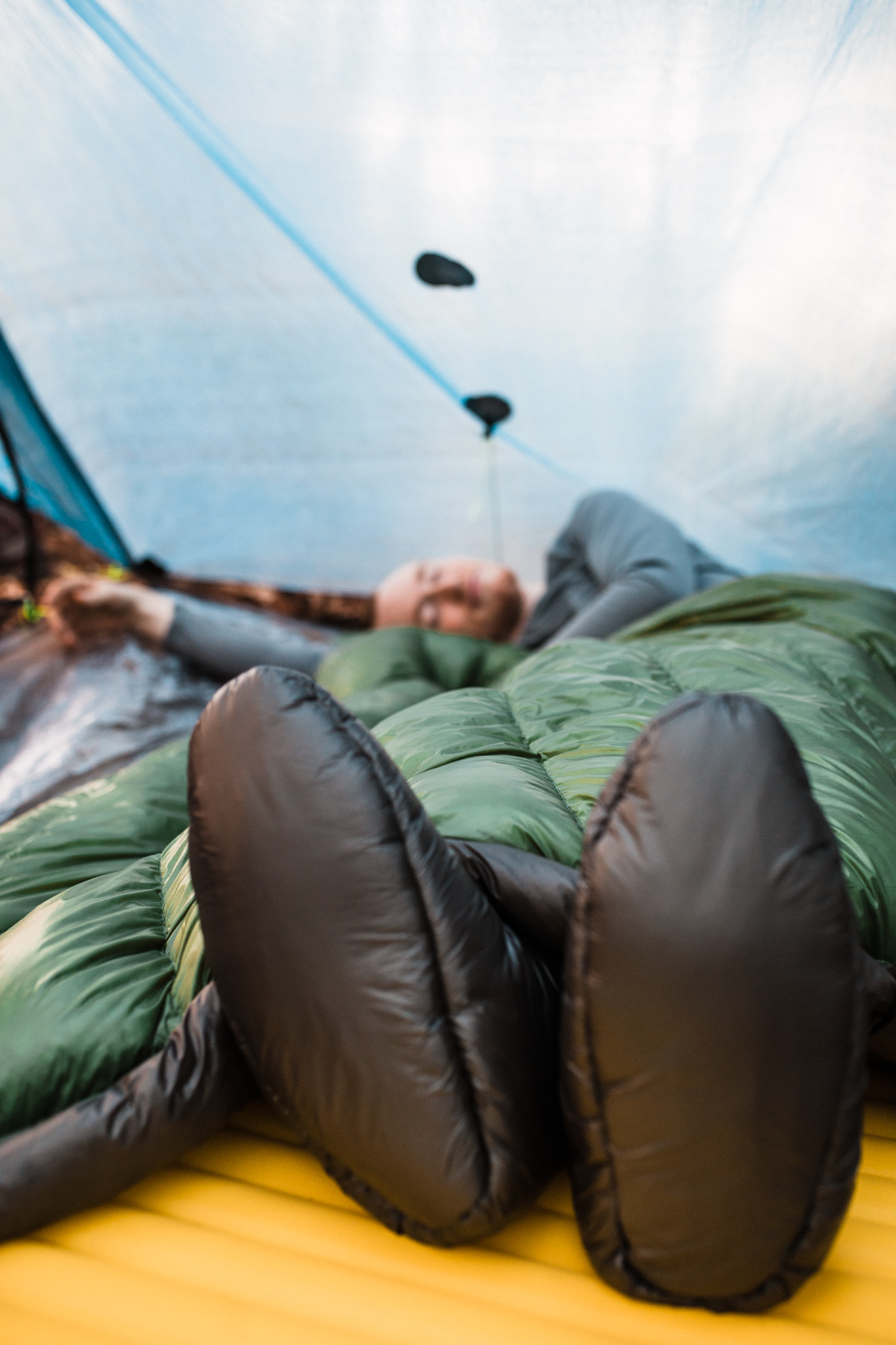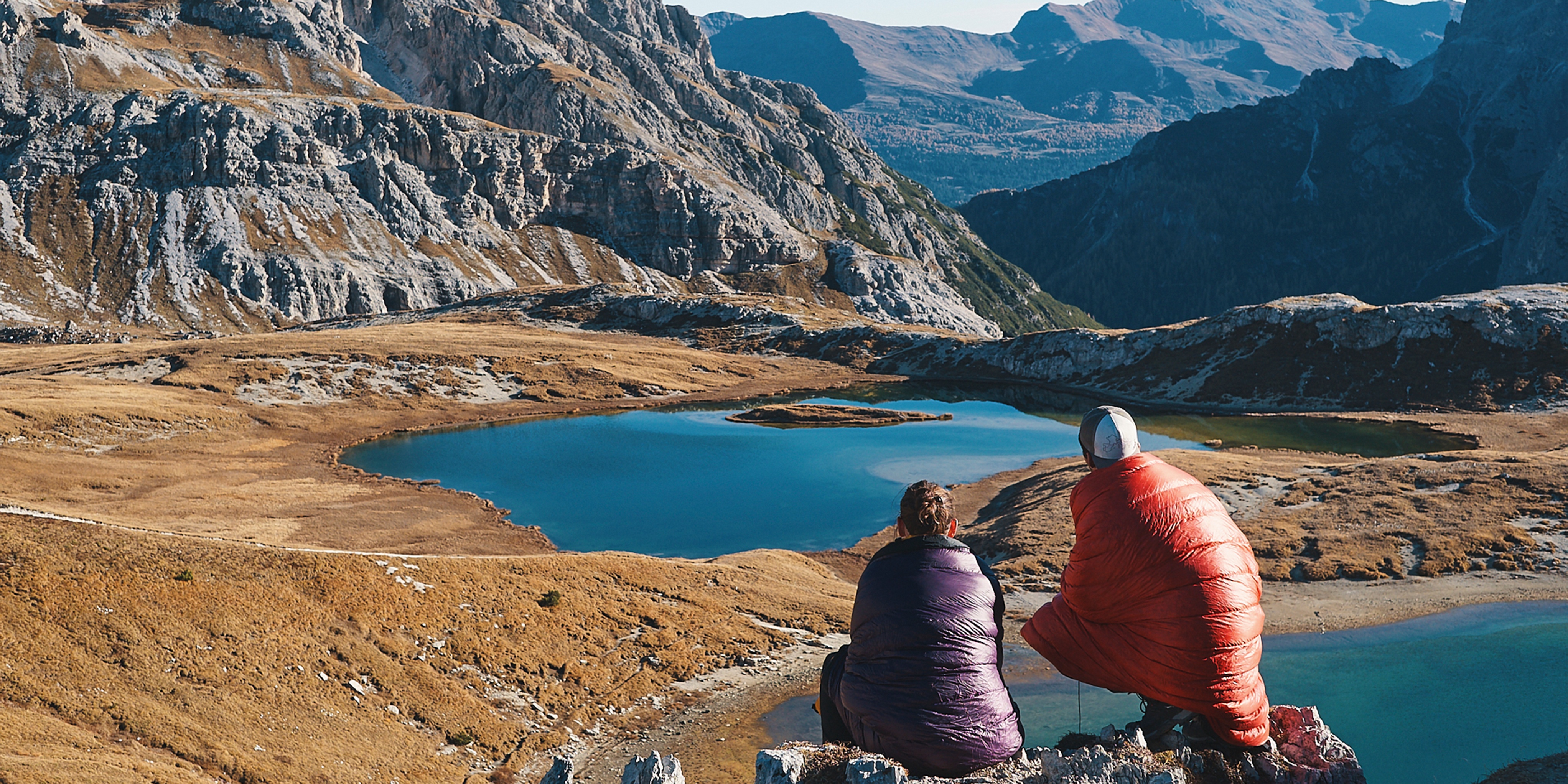Should I Choose a Down or Synthetic Sleeping Bag or Quilt?
Which Sleeping Bag or Quilt Insulation Is Right for You?
One of the most common questions we hear is, “Should I choose a down or synthetic sleeping bag or quilt?” That’s usually followed by:
“What’s the difference?”
“What do most hikers prefer?”
“Does it really matter?”
If you’re asking these same questions, you’re in the right place. At Enlightened Equipment, we offer both down and synthetic insulation options across our sleeping bags and quilts. Each has unique advantages depending on your adventure, climate, and budget. In this guide, we’ll break down the key differences, compare pros and cons, and help you decide which insulation type is best for your next trip.
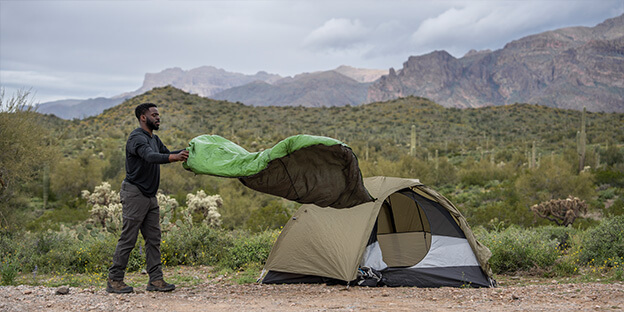
Down Insulation
Down has been used for insulation since the 17th century and is yet to be beaten. Harvested from geese or ducks, down provides the best combination of warmth and weight.
Down-insulated items often feature a “fill power” rating. This rating refers to the amount of space an ounce of down insulation can fill. 950 fill power is loftier than 850 fill power, meaning less down is required to reach a given warmth, resulting in a lighter sleeping quilt.
Down insulation is also more compressible, resulting in a more compact pack size. The most considerable downside of down insulation is that it loses insulating power while wet, meaning a wet quilt usually means a cold night.
Pros:
Superior warmth for the weight
More Compressible
Most durable and longer lasting
Cons:
More expensive
Does not insulate while wet
Requires more maintenance
When to choose a down sleeping bag or quilt: General backpacking, extreme ultralight backpacking, travel, desert climbing, camping
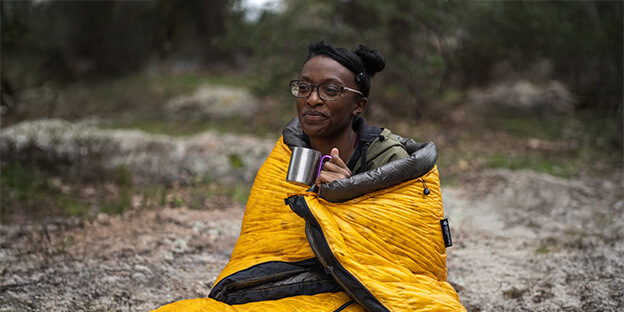
Synthetic
There are a variety of synthetic insulation materials on the market currently. Enlightened Equipment builds synthetic sleeping quilts out of Climashield Apex insulation. Climashield Apex is made of continuous filaments (like a sheet) that require no quilting/baffling and remain warm(up to 80% of warmth!) while wet.
Different quilts use different thicknesses of Apex insulation to trap additional air for warmer sleeping quilts. Our Torrid line also uses Apex to provide maximum warmth in all conditions.
The primary downside of synthetic insulation is additional weight and packed volume, especially in warmer quilts.
Pros:
Insulates when wet
Vegan
No Baffles
Cons:
Less Compressible especially in lower temp variations
Not as light as down gear
When to choose a synthetic sleeping bag or quilt: Canoeing, rainforest or tropical backpacking, extreme condition backpacking, survival, alpine climbing.
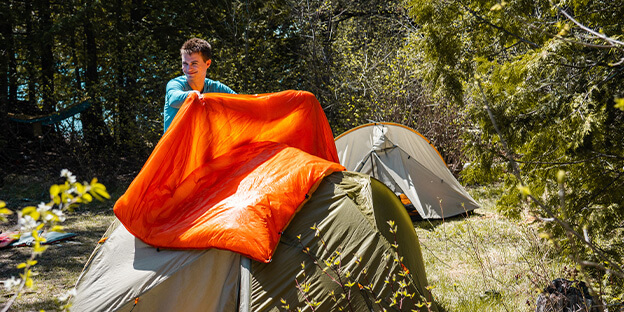
Should I choose a Down or Synthetic sleeping bag or quilt?
Down sleeping quilts are our most popular item for a variety of reasons. First, weight and compressibility are of primary concern for most users. Next, most users are in environments that are unlikely to result in a quilt getting completely wet and unable to dry out.
Like most things, insulation choice is mostly preference and forecasting of the adventures you’ll be taking. If you need the lightest, most tried-and-true quilt, go with down insulation. If you’ll be facing severely wet or humid weather and need a quilt on a budget, go with synthetic.


